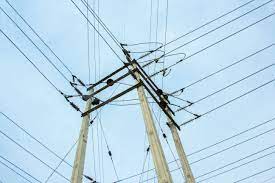
The recent national grid collapse has left Band A customers with a reduced electricity supply.
Experts blame the failures on poor infrastructure and outdated systems.
The government estimates $10 billion is needed to stabilise the power sector. However, funding remains a challenge in the volatile energy market.
The recent national grid collapse in the past week resulted in widespread power outages across Nigeria, significantly affecting Band A customers who previously enjoyed a minimum of 20 hours of electricity supply.
These electricity subscribers, who pay a premium rate of N206 per kWh for their power usage, are entitled to this level of service as part of their subscription.
According to the Minister of Power, Adebayo Adelabu, Distribution Companies (DisCos) that fail to meet the 20-hour electricity supply threshold for Band A customers are to be subjected to sanctions.
While some have criticized this model as discriminatory and inequitable, the government insists it reflects the principle of “those who pay more should access more light.”
Band A customers, accounting for about 15% of the total electricity subscribers in Nigeria, pay a cost-reflective tariff without any subsidy.
By estimation, there are about 2 million Band A customers out of the country’s registered 13 million electricity subscribers.
Despite the restoration of the national grid after last week’s incessant failures, Nairametrics can confirm that most Band A subscribers are yet to resume enjoying 20 hours of electricity supply.
Instead, they currently receive about 12 to 16 hours daily, as the grid is yet to reach full capacity.
“So far, the grid hasn’t reached its full capacity since its last collapse, so it’s expected users will see a reduction In their electricity supply for now. Once the grid reaches full capacity, then you can expect things to change,” explained Mr. Seyi Ayotunde, an official of Ikeja Electric, in a conversation with Nairametrics.
However, customers, particularly those with underestimated billing, believe they are not receiving the service they paid for.
Many are concerned about paying premium tariffs without experiencing the premium service promised.
“We hardly have up to 16 hours of light now. Since the grid collapsed, they don’t bring the light like they used to. Before, we used to have up to 22 to 23 hours of power supply, but that is no longer the case,” lamented Mrs. Joyce Iraboh, a Lagos resident living in Onipanu.
Another customer, Ope, who resides under a Band A feeder in Ogba, echoed similar sentiments:
“I noticed the decline in electricity supply. We don’t usually have the 20-hour light they promised us. But we are expected to pay a premium as estimated billing.”
Even prepaid meter users are not exempted. While their payment is usage-based, the principle of being on a subsidy-free tariff implies access to the promised electricity supply. The discrepancy between cost and service has left many feeling cheated.
Minister Adelabu previously stated that Band A customers save significantly on generator expenses due to their usual 20 hours of electricity supply.
“With an average Band A customer enjoying 20 hours of electricity supply, it simply means they don’t have to buy a subsidy-free petrol for their generators,” Adelabu said.
However, with the national grid struggling to recover, many Band A customers now have to rely on generators to meet their energy needs, further increasing their expenses.
“Imagine paying for premium electricity only for you to still have to rely on a generator to do your job. I work from home. So, since we no longer have light like before, I don’t have a choice but to get fuel to work. And fuel is expensive,” said David, a resident of Ojodu, reflecting on the challenges caused by the grid collapse.
As of November 17, 2024, the national grid’s off-peak generation stood at 3,563.02 MW, significantly lower than the usual figure of around 4,500 MW or more.
This decline has resulted in reduced electricity supply to customers, including Band A feeders. Online reactions further highlighted these issues.
Another user, @Aryhoblueblood, expressed his frustration, referring to the stat on the National Grid X page:
“I think it is high time you stop posting these stats cos it’s confusing. Your stats seem to point to the fact that all is well with the national grid but the Discos fail to distribute accordingly. We’ve not had light for 24hrs now and we’re supposedly in Band A. Is that normal?”
“We usually don’t have a steady power supply again after the last national grid collapse. Please, what is the problem?”
On their part, energy experts believe that frequent grid collapses and inconsistent electricity supply stem from inadequate infrastructure.
“Restoration of the grid takes time. It all depends on what causes the failure in the first place. For instance, it could be tripping off the power line, which makes it difficult to load power and distribute it to the DisCos. It could be vandalism also, which means TCN’s officials have to work to rebuild whatever is damaged,” explained Abiodun Sonekan, an energy expert.
Lagos-based electricity consultant Kingsley Effiong emphasized the need for investment in the Supervisory Control and Data Acquisition (SCADA) system to prevent frequent grid collapses.
“The government must prioritize electricity supply now that alternative energy sources are very expensive. You can’t remove subsidy on petrol and electricity and still deny people light. How do you expect them to survive?” Effiong said.
“If the government had spent more money on the SCADA system, which will protect the grid in real-time from collapsing, there wouldn’t be this incessant collapse. Most of TCN’s infrastructure is old and not functioning at optimal capacity in most cases.”







